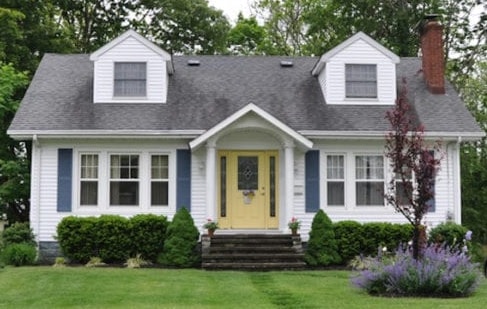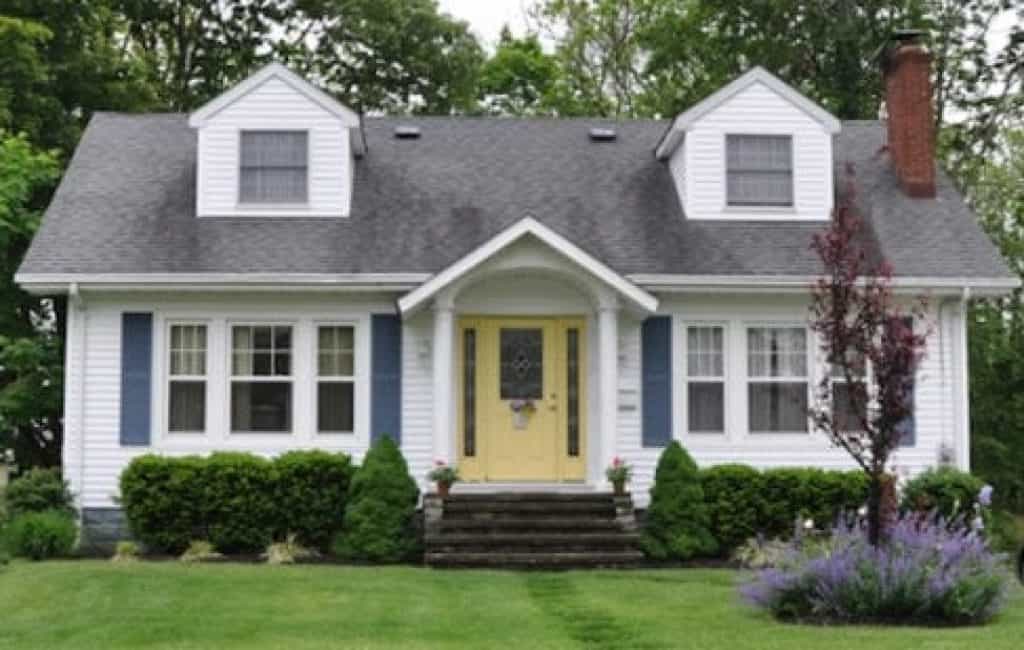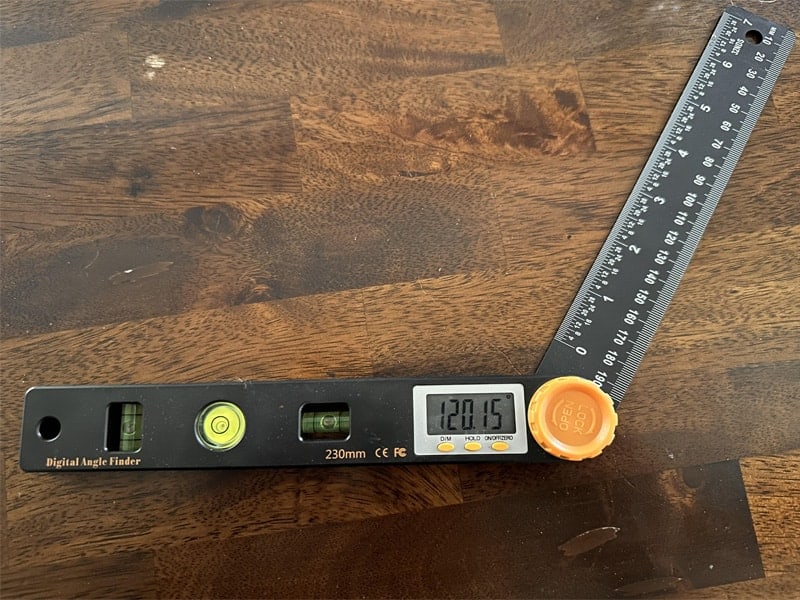
If you are an appraiser or are curious to know what an appraiser is required to do on an appraisal, reviewing Fannie Mae’s frequently asked questions sections is a great placed to provide some insight and clarity on the appraisal. Here are the F.A.Q.’s issued by Fannie Mae

Property Eligibility
Q1. In the list of ineligible properties, boarding houses are identified as an ineligible property type. Is a group home considered to be a boarding house and therefore an ineligible property type?
No. Group homes are residential structures utilized for occupancy by persons with disabilities and are not
considered to be boarding houses. Group homes are an eligible property type according to the requirements of
the Selling Guide.
Q2. Why are boarding houses and bed and breakfast properties considered to be an ineligible property type?
Fannie Mae purchases and securitizes mortgage loans secured only by properties that are primarily residential in nature. Boarding houses and bed and breakfast properties are not primarily residential in nature and therefore are not eligible.
Q3. In originating a loan with a property located on a leasehold estate, does the lease need to be submitted to Fannie Mae for review and approval?
No. The lender must review the lease to ensure that it complies with the lease requirements as described in Selling
Guide section B2-3-03, Special Property Eligibility and Underwriting Considerations: Leasehold Estates.
Q4. An exception to the Multiple Parcels policy is allowed if a non-adjoined parcel, divided from the main parcel by a road, is a non-buildable lot. In this scenario, where would a lender obtain evidence that the lot is non-buildable?
The documentation that indicates a lot is non-buildable must be obtained from the local municipality or
jurisdiction in which the property is located and must be included in the loan file.
Appraiser Selection and Management
Q5. If a lender utilizes an appraisal management company (AMC) for the selection of an appraiser, is the lender still responsible for ensuring that the appraiser holds an active state license or state certification as of the effective date of the appraisal?
Yes. The lender must ensure that the state license or state certification is active as of the effective date of the
appraisal.
Q6. Where can a lender obtain information on the license or certification status of an appraiser?
This information may be obtained from the Appraisal Subcommittee website at asc.gov, state appraisal boards, or from third-party vendors.
Q7. Does Fannie Mae accept appraisals when an unlicensed or uncertified appraiser or appraiser trainee completed the property inspection?
Yes. An unlicensed or uncertified appraiser or appraiser trainee may perform a significant amount of the appraisal
including the property inspection and sign the left side of the appraiser certification as the Appraiser if:
- he or she is working under the supervision of a state-licensed or state-certified appraiser as an employee or sub-contractor,
- the right side of the appraiser certification is signed by that supervisory appraiser, and
- it is acceptable under state law.
However, unlicensed or uncertified appraisers and appraiser trainees are not allowed to do only the inspection, as Fannie Mae’s appraisal report forms identify the Appraiser as the individual who:
- personally inspect the property being appraised,
- inspected the exterior of the comparables,
- performed the analysis, and
- prepared and signed the appraisal report as the appraiser.
Additionally, while the supervisory appraiser takes full responsibility for the appraisal report when signing the right side of the appraiser certification, he/she is not required to also physically inspect the subject property or comparables.
See Selling Guide section B4-1.1-3, Appraiser Selection Criteria (01/31/2017) for additional requirements.
Q8. Why does Fannie Mae require the lender to provide the sales contract to the appraiser?
Fannie Mae’s policy is intended to help ensure that the appraiser is aware of all relevant aspects of the transaction. The sales contract provides important sales and financing data, including whether there are any concessions as part of the transaction.
Q9. What if the contract is amended after the appraisal is completed?
If the contract is amended after the appraisal is completed, the lender must provide an updated contract to the appraiser if it is amended in a way that affects the description of the real property used by the appraiser. However, minor updates to the contract, such as changes to seller-paid closing costs or changes to the contract price, do not require an updated appraisal. Contract amendments that could affect the description of the property include:
- Amendments due to revised plans/specs for new construction or remodeling
- Changes in the legal description, acreage and/or number of parcels conveyed
Renegotiated seller concessions or sale price as a result of a home inspection revealing property damage or deferred maintenance.
Some examples of amendments that do not require the lender to provide the amended contract nor obtain revisions to the already-completed appraisal report include:
- sale price,
- transaction terms,
- financing concessions,
- seller-paid closing costs,
- names or initials,
- closing date, and
- correction of minor clerical errors such as misspellings.
Appraisal Submission and Forms
Q10. Are all appraisals required to be completed on a UAD-compliant form?
No. Fannie Mae requires the following appraisal report forms to be completed utilizing Appendix D of the UAD Specification when reporting the results of an appraisal for a conventional mortgage loan:
- Uniform Residential Appraisal Report (Form 1004)
- Individual Condominium Unit Appraisal Report (Form 1073)
- Exterior-Only Inspection Individual Condominium Unit Appraisal Report (Form 1075)*
- Exterior-Only Inspection Residential Appraisal Report (Form 2055)*
Although the Manufactured Home Appraisal Report (Form 1004C), the Small Residential Income Property Appraisal Report (Form 1025), and the Individual Cooperative Interest Appraisal Report (Form 2090) are Non-UAD forms, Fannie Mae does require that they be submitted to UCDP prior to loan delivery.
*These forms currently are not offered in Desktop Underwriter® (DU®) as fieldwork options.
Q11. If revisions are made to an appraisal report after it was submitted through the Uniform Collateral Data Portal® (UCDP®), does Fannie Mae require the revised appraisal to also be submitted through UCDP?
Yes. Fannie Mae requires that the final version of the appraisal report that is utilized in making the underwriting decision be submitted through the UCDP and receive a “Successful” status from the UCDP prior to the delivery of the loan.
Q12. Are there any exceptions to the requirement that the appraised value submitted in UCDP match the appraised value as reported at delivery?
Yes. An exception is allowed if the “appraised value” used to underwrite the loan is based on a desk or field review, because those types of reports cannot be uploaded to the UCDP. In those instances, the appraised value reported at delivery will reflect the value stated in the desk or field review. However, the original appraisal that was the subject of the review must have been submitted to UCDP.
Appraising condo and co-op projects
Q13. What is the expectation if the lender and/or association contact does not provide the appraiser any information pertaining to special assessments and/or significant deferred maintenance?
If the appraiser is not given enough information to adequately determine the opinion of value, they cannot complete the report.
Q14. Do appraisers need to look at special assessments for the entire project?
Lenders and appraisers need to understand if the special assessments pertain to defects or deferred maintenance and affect safety, soundness, or habitability of the project as a whole.
Q15. How can appraisers gather information about special assessments or significant deferred maintenance that may impact the safety and soundness of the unit or the overall project and its amenities?
Lenders should provide appraisers any information they have obtained regarding special assessments or deferred maintenance. Additional sources for information may include homeowners, borrowers, real estate agents, and visual observations.
Appraisal Policy
Q16. Is it acceptable for an appraiser to obtain and provide the required interior photographs at the time of the inspection for the Appraisal Update and/or Completion Report (Form 1004D)?
Yes. If the property being appraised is proposed or at a stage of construction where the required photographs cannot be obtained, they may be obtained at the time of the inspection for the Certification of Completion and provided with the Form 1004D.
Q17. If an appraiser provides an Appraisal Update and reports an increased value, can the lender utilize the value increase to underwrite the loan in process?
No. The purpose of the Appraisal Update portion of the Form 1004D is to indicate whether the value has remained the same or decreased. If the value has increased, the lender would need to obtain a new appraisal that reflects the increase in value in order to utilize the higher appraised value in underwriting the loan.
Q18. Can a previous appraisal be used for a subsequent limited cash-out refinance transaction when the borrower is refinancing to buy out another borrower’s interest?
Yes. In this scenario, a previously completed appraisal may be utilized; however, the lender must ensure the requirements identified in Selling Guide section B4-1.2-02, Appraisal Age and Use Requirements, have been met. The one acceptable variation to the policy is that the borrowers identified on the appraisal will not all be borrowers on the refinance transaction, given that one borrower is buying out the other borrower(s) on the refinance transaction.
Q19. Will Fannie Mae purchase loans with outstanding repair or completion escrows on an existing property?
Yes, as long as the items for which the escrows were established are reflected in the appraiser’s opinion of value and the lender can ensure that they do not affect the safety, soundness, or structural integrity of the property.
Q20. Will Fannie Mae purchase loans secured by properties in areas where the appraiser indicates there is an oversupply of houses, prices are declining, and/or the average marketing time is greater than six months?
Yes, Fannie Mae purchases mortgages secured by properties in all markets.
Q21. What type of properties are to be analyzed for the data reported in the One-Unit Housing Trends portion of the Neighborhood section of the appraisal report form?
The data regarding trends to be reported in the One-Unit Housing Trends section must be reflective of those properties deemed to be competitive to the property being appraised. Additional commentary should be provided on the other segment(s) of the neighborhood when segmentation is present to aid in understanding the overall neighborhood dynamics.
Q22. Are properties that are identified as having an over-improvement eligible for sale to Fannie Mae?
Yes; however, because the property has been identified as having an over-improvement, the lender must review the appraisal to ensure that the appraiser has adjusted only for the over-improvement to the extent that it contributes value to the property.
Q23. Will Fannie Mae accept a loan for which the lender has requested the appraiser to appraise only a portion of a larger piece of property?
No. Fannie Mae expects that the appraisal will reflect the value attributable to the entire property. It is important for the underwriter and Fannie Mae to fully understand the value of the entire property that is serving as security for the loan.
Q24. If a property constitutes a legal, non-conforming use of the land and is a one- to four-unit property or a unit in a PUD, must a lender obtain documentation that indicates the improvements can be rebuilt to current density in the event of partial or full destruction?
No. The requirement for the copy of the zoning regulations or a letter from the local zoning authority that authorizes reconstruction to current density only applies when the property being appraised is a condo unit or a co-op share loan located in a project.
Q25. Will Fannie Mae lend on a property where the utilities were not turned on at the time of the appraisal inspection?
Yes. Fannie Mae does not require that the utilities that serve the property be turned on at the time of the inspection.
Q26. Can a loan be delivered to Fannie Mae if the property is located on a community-owned or privately maintained street and there is no agreement or covenant for maintenance or statutory provisions that define these responsibilities?
Yes. If there are no statutory requirements for maintenance and either
(a) there is no agreement or covenant for maintenance, or
(b) an existing agreement or covenant does not contain provisions that describe the responsibility for payment of repairs, default remedies, the effective term of the agreement; and is not recorded in the land records of the appropriate jurisdiction, lenders may still deliver loans on these properties. However, should Fannie Mae experience any losses or expenses as a result of the physical condition of the street or in order to establish and/or retain access, the lender is responsible for the reimbursement of these losses or expenses.
Q27. Are loans secured by unique or non-traditional homes eligible for delivery to Fannie Mae?
Yes. Fannie Mae does purchase loans secured by unique or non-traditional housing types, such as, but not limited to, log homes, earth berm homes, and geodesic domes, which can be located in all areas, including rural locations. Loans on these types of properties are eligible for delivery to Fannie Mae provided the appraiser has adequate information to develop a credible opinion of market value and the property meets other eligibility requirements
Q28. Is there a required number of comparables that must be of similar design or appeal as the unique or nontraditional home that is being appraised?
No. There is no requirement that one or more of the comparables be of the same design and appeal as the property that is being appraised. However, appraisal credibility is enhanced by the use of comparables that are the most similar in design and appeal.
Q29. Is there a required number of comparables that the appraiser must provide when appraising a one-unit property with an accessory unit?
When there is an ADU, the appraisal report must include a description of the ADU and analysis of any effect it has on the value or marketability of the subject property. The appraisal report must demonstrate that the improvements are acceptable for the market. An aged settled sale will qualify as a comparable, and an active listing or under contract sale will qualify as a supplemental exhibit to show marketability.
Q30. If it is determined that the property contains an ADU that is not allowed under zoning (where an ADU is not allowed under any circumstance), the appraisal report must demonstrate that the improvements are typical for the market through an analysis of at least two comparable sales with the same non-compliant zoning use. Aged settled sale(s) with the same non-compliant zoning use are acceptable if recent sales are not available. At a minimum, the appraisal report must include a total of three settled sales. If the subject property features an unpermitted addition, can the square footage of the unpermitted addition be included in the total gross living area reported on the appraisal report?
If the appraiser has identified an addition(s) that does not have the required permit, the appraiser must comment on the quality and appearance of the work and assess the impact, if any, on the market value of the subject.
Q31. What is the appraiser’s responsibility for reporting property condition and quality?
The appraiser is responsible for considering all factors that have an impact on value in the development of his/her opinion of market value for the subject property. Fannie Mae requires the appraiser to describe the condition and quality of the property on its appraisal report forms. The appraiser must report the condition and quality of the property in factual, specific terms. Fannie Mae required the appraiser to describe the condition and quality of the property on its appraisal report forms. The appraiser must report the condition and quality of the property in factual specific terms utilizing the UAD ratings as described in Selling Guide section B4-1.3-06, Property Condition and Quality of Construction of the Improvements. An accurate description of the physical condition and quality of the subject property is a critical element in arriving at a supportable opinion of market value, as well as in the prudent underwriting of a mortgage loan.
Q32. Should the ratings for Condition and Quality be selected on a relative basis or an absolute basis?
The Condition and Quality ratings must not be selected on a relative basis, meaning the ratings are not selected on how the property relates or compares to other properties in the neighborhood. The Condition and Quality ratings must be based on a holistic, or absolute, view of the property and any improvements. The appraiser must consider all the improvements to determine an overall Condition and Quality rating, selecting the rating that best reflects the property as a whole and in its entirety, rated on its own merits. This requirement also applies to the comparable sales.
Q33. Are there situations when a selected Condition or Quality rating may change when the same transaction is being used in a subsequent report?
Yes. Ratings should remain the same when it reflects the same transaction being reported in subsequent reports; however, there may be instances in which additional information regarding the property may become evident at a later time and the appraiser may need to adjust the rating that is applied in a subsequent report. What is not acceptable is for the ratings to be changed merely to meet the needs of the assignment.
Q34. What is expected with regard to the appraiser’s inspection of a property?
Fannie Mae requires that the appraiser conduct a complete visual inspection of the accessible areas of the interior and exterior of the property. The appraiser is responsible for noting in his/her report any adverse conditions (such as, but not limited to, needed repairs; deterioration; or the presence of hazardous wastes, toxic substances, or adverse environmental conditions) that were apparent during the inspection of the property or that he/she became aware of during the research involved in performing the appraisal.The appraiser is expected to consider and describe the overall condition and quality of the property and identify items that require immediate repair as well as items where maintenance may have been deferred and which may not require immediate repair. On the other hand, an appraiser is not responsible for hidden or unapparent conditions.
In addition, Fannie Mae does not consider the appraiser to be an expert in all fields, such as environmental hazards. In situations where an adverse property condition may be observed by the appraiser but the appraiser is not qualified to decide whether that condition requires immediate repair (such as the presence of mold, an active roof leak, settlement in the foundation, etc.), the property must be appraised subject to an inspection by a qualified professional. In such cases, the lender may need to ask the appraiser to update his or her appraisal based on the results of the inspection, in which case the appraiser would incorporate the results of the inspection and measure the impact, if any, on his or her final opinion of market value.
Q35. What is the expectation of appraisers when the subject has missing or no appliances?
It is common for appliances to be considered personal property and not given any contributory value if they are not permanently attached to a property’s structure. However, it is at the appraiser’s discretion to determine if the appliances are considered personal property or permanently attached to or built-in to the property structure. The appraiser should determine which appliances are common in the subject’s market area and, if any appliances are missing, analyze the impact on value and/or marketability.
Q36. In what situations should a property be appraised “as-is” versus “as-repaired”?
Fannie Mae permits an appraisal to be based on the “as-is” condition of the property as long as any minor conditions, such as deferred maintenance, do not affect the safety, soundness, or structural integrity of the property, and the appraiser’s opinion of value reflects the existence of these conditions. Minor conditions and deferred maintenance items include worn floor finishes or carpet, minor plumbing leaks, holes in window screens, or cracked window glass. Minor conditions and deferred maintenance typically are due to normal wear and tear from the aging process and the occupancy of the property. Such conditions generally do not rise to the level of a “required repair.” Nevertheless, they must be reported. The appraiser must identify physical deficiencies that could affect the safety, soundness, or structural integrity of the property as part of his or her description of the physical condition of the property. These may include cracks or settlement in the foundation, water seepage, active roof leaks, curled or cupped roof shingles, inadequate electrical service or plumbing fixtures, etc. If the appraiser has identified any of these deficiencies, the property must be appraised subject to completion of the specific repairs or alterations. In these instances, the property condition and quality ratings must reflect the condition and quality of the property based on the hypothetical condition that the repairs or alterations have been completed.
Q37. Is it acceptable for an appraiser to use sales that are not truly comparable to the subject?
Yes. If there is a shortage of truly comparable sales in the area where the subject property is located, either due to the nature of the property improvements or the relatively low number of sales transactions in the neighborhood, the appraiser might need to use as comparable sales, properties that are not truly comparable to the subject property. In some situations, sales of properties that are not truly comparable to the subject may simply be the best available and the most appropriate for the appraiser’s analysis. The use of these sales is acceptable provided the appraiser adequately documents the analysis and explains why these sales were used. This may often be the case in rural locations where the best and most appropriate sales may not be truly comparable to the subject being appraised.
Q38. Can the appraiser use comparable sales that closed over twelve months ago?
Yes. The best and most appropriate sales may not always be the most recent. A sale more than 12 months old may be more appropriate in situations when market conditions have impacted the availability of recent sales as long as the appraiser accounts for any changes in market conditions. Additionally, older comparable sales that are the best indicator of value for the subject property can be used if they are appropriate. For example, if the subject property is located in a rural area that has minimal sales activity, the appraiser may not be able to locate three truly comparable sales that sold within the last twelve months. In this case, the appraiser may use older comparable sales as long as he or she explains why they are being used and makes appropriate time adjustments if necessary.
Q39. Are there any limitations to the distance that a comparable sale may be located from the subject?
No. Comparable sales located a considerable distance from the subject property can be used if they represent the best indicator of value for the subject property. In such cases, the appraiser must use his or her knowledge of the area and apply good judgment in selecting the comparable sales that are the best indicators of value, and the appraisal must include an explanation of why the particular comparables were selected. This may be especially important for appraising rural housing since rural properties often have large lot sizes, and rural locations can be relatively undeveloped.
Q40. Are there limitations or guidelines regarding adjustments to comparables?
No. There are no specific limitations or guidelines associated with net and gross adjustments for comparables. The number and/or amount of the adjustments must not be the sole determinant in the acceptability of the comparable. While in theory it remains true that the best and most appropriate comparable would require no adjustments, it would be rare to find two properties and their transaction details that are identical. Fannie Mae does require that adjustments to the comparables be based on the market reaction to the differences noted between the subject and the comparable. For example, it is not acceptable to use a rule-of-thumb $20 per square foot adjustment for the gross living area when the market analysis indicates that an adjustment of $100 per square foot should be used. The expectation is that appraisers analyze the market for competitive properties and provide adjustments that reflect the market reaction without any consideration to limits regarding the size of the adjustment. This may be especially important in small towns and rural areas where there may be a relatively low sales volume and a wide variety of property types, and large market-based adjustments may be required.
Q41. How should the appraiser determine appropriate adjustments for sales concessions on the comparables?
The appraiser must consider the impact a sales concession had on the transaction. The adjustments must reflect the difference between what the comparables actually sold for with the sales concessions and what they would have sold for without the concessions, so that the dollar amount of the adjustments approximates the reaction of the market to the concessions. In some cases, that may mean no adjustment is warranted, or in other cases, the appropriate adjustment might be less than the actual dollar amount. If the appraiser’s analysis determines that the market’s reaction is the full amount of the financing concession, a dollar-for-dollar adjustment is acceptable.
Q42. What types of comments must the appraiser make when explaining the adjustments that were made in the Sales Comparison Approach?
The appraiser must provide appropriate comments that reflect the logic and the reasoning for the adjustments provided, especially for the characteristics reported on the appraisal report form between the Sales or Financing Concessions and the Condition line items. A statement only recognizing that an adjustment has been made is not acceptable.
Q43. Is the Market Conditions Addendum to the Appraisal Report (Form 1004MC) required by Fannie Mae?
Effective August 7, 2018, Fannie Mae no longer requires Form 1004MC as part of the appraisal report. Appraisers are still required to research, analyze, and provide support for market conclusions reported in the appraisal report and remain responsible for accurately reporting them in the Neighborhood section of Fannie Mae’s appraisal forms. Note that other investors may still require submission of Form 1004MC.









